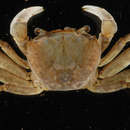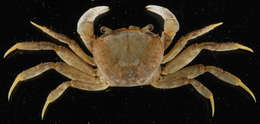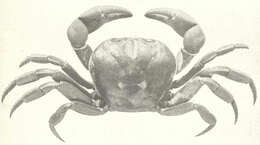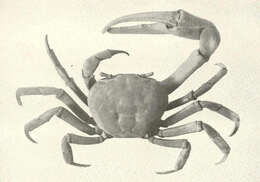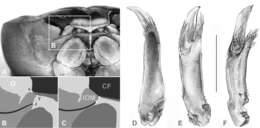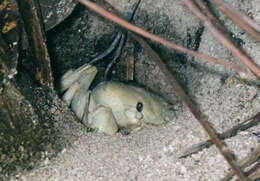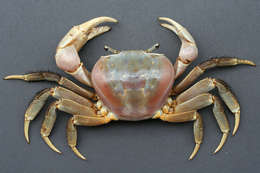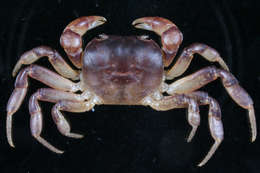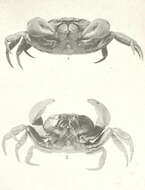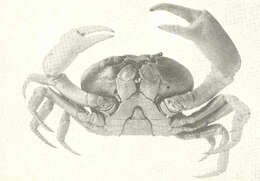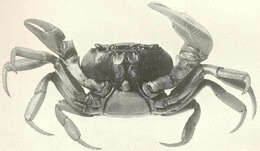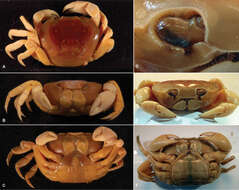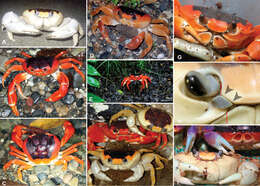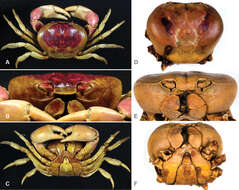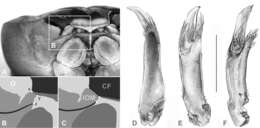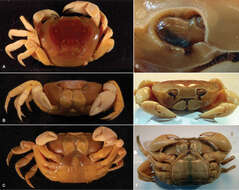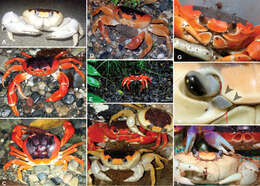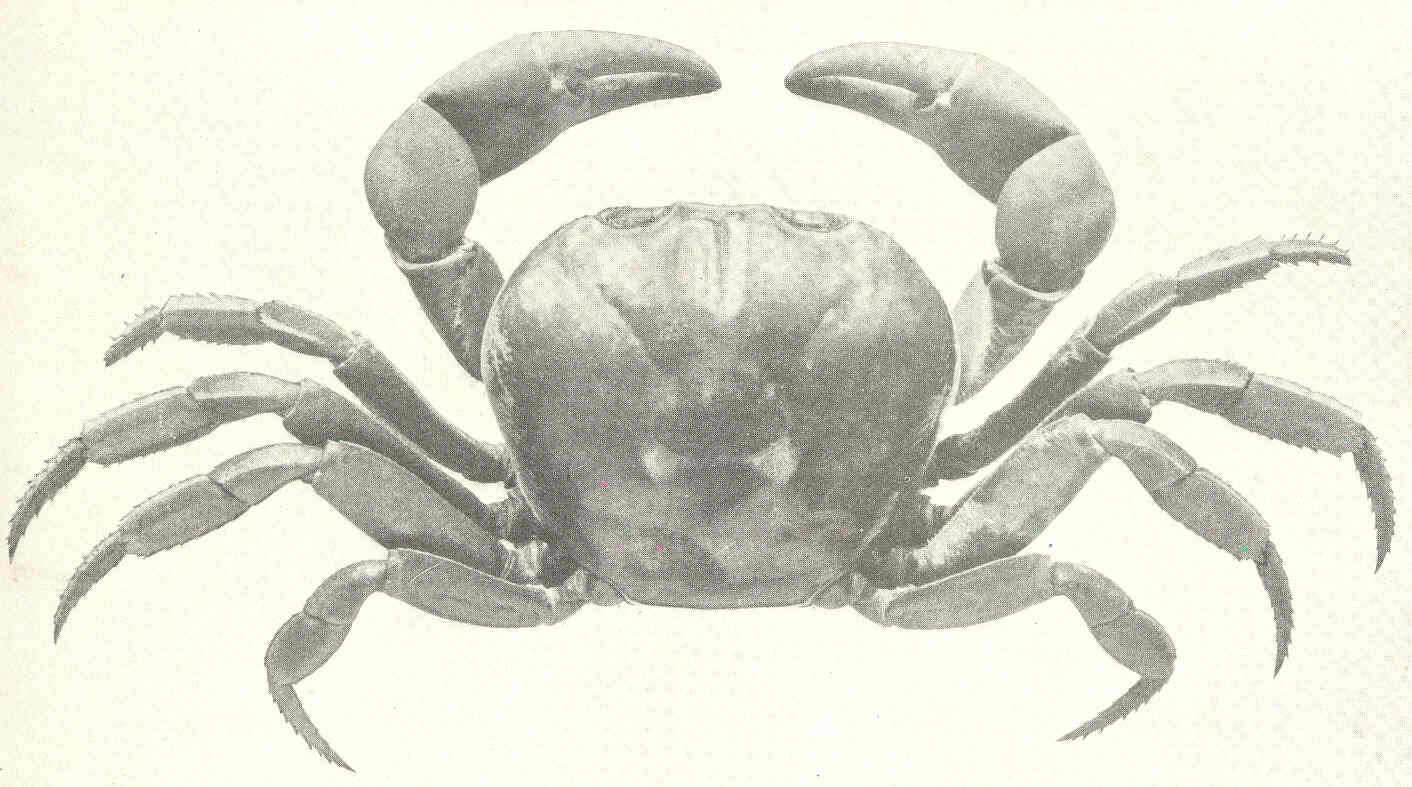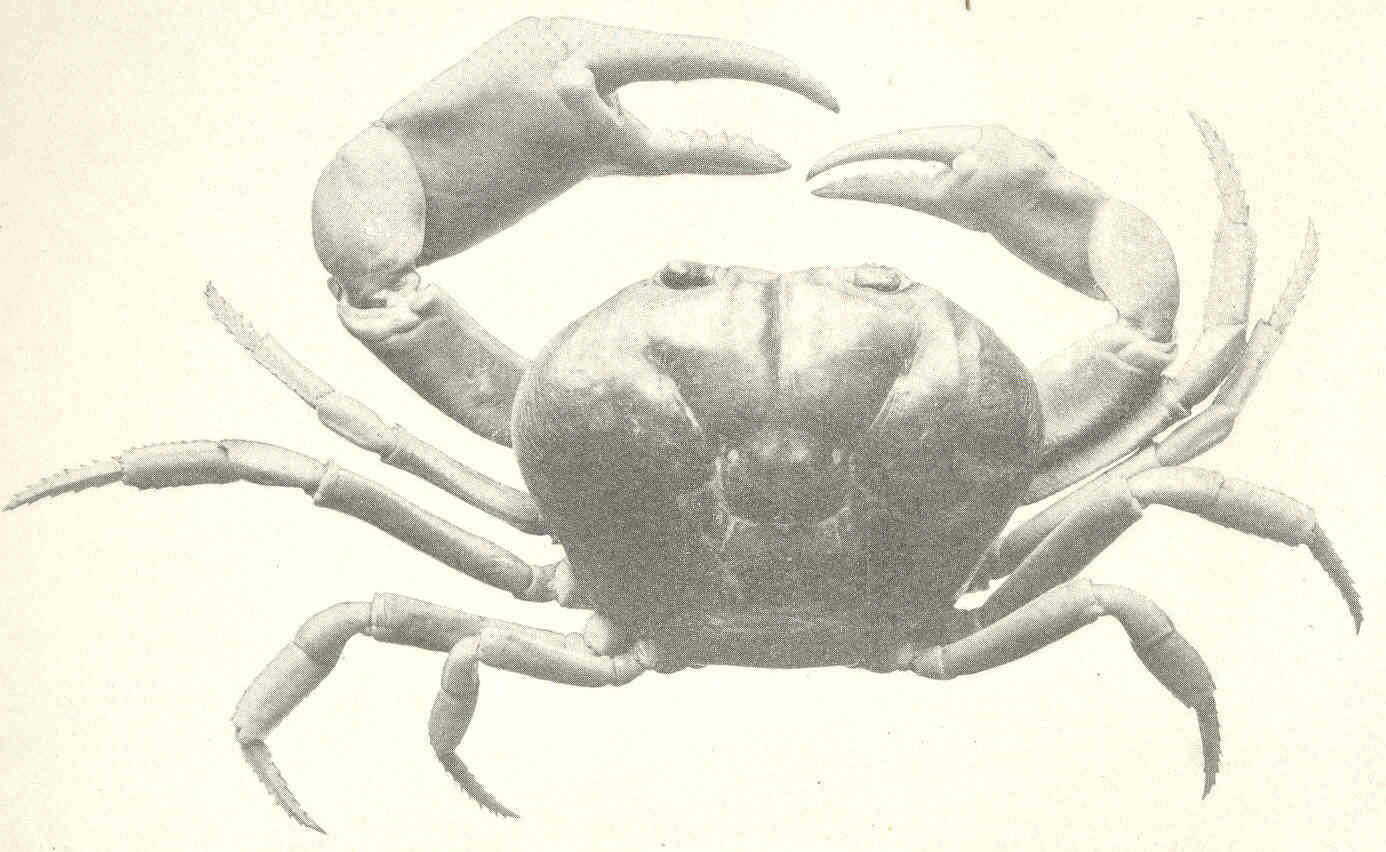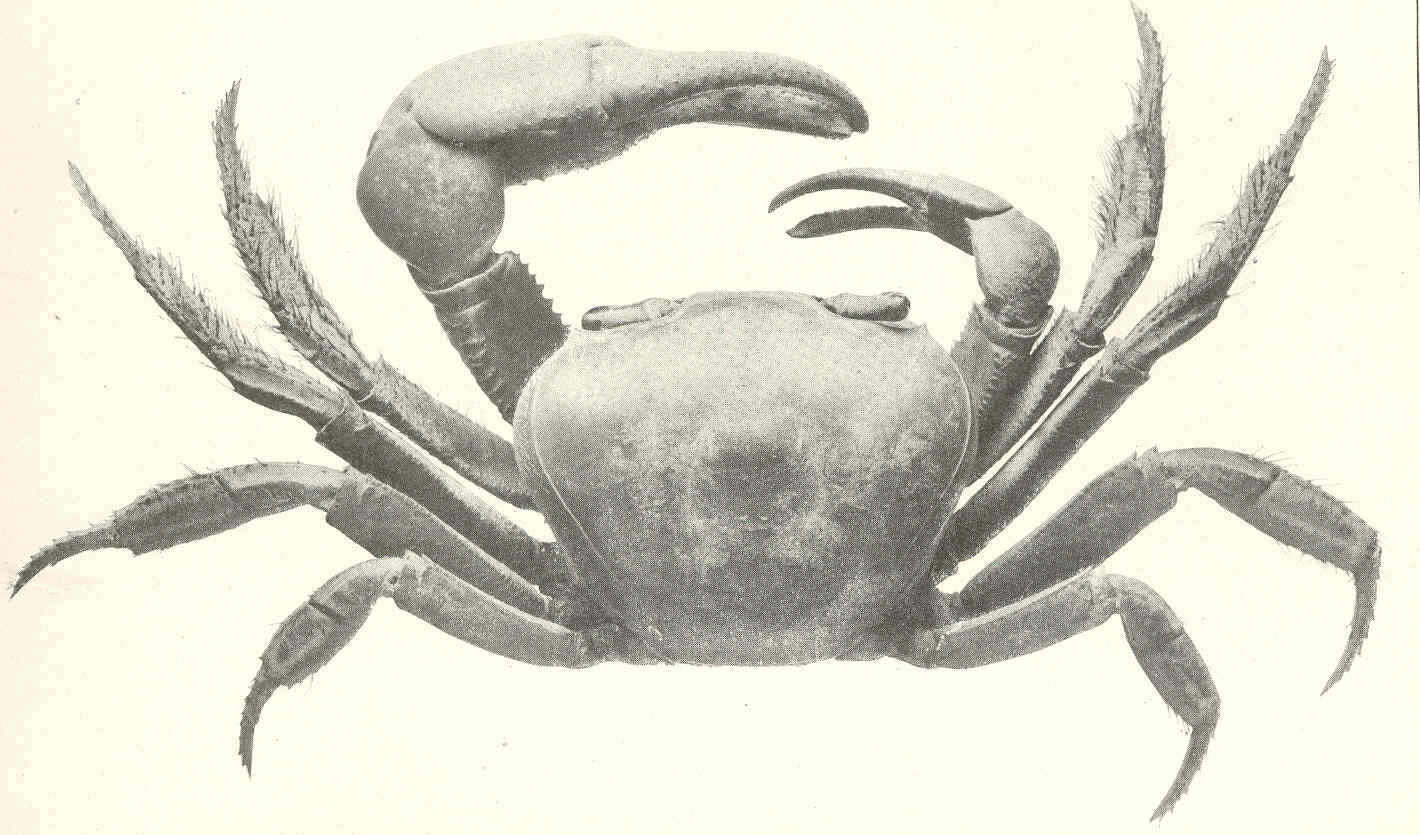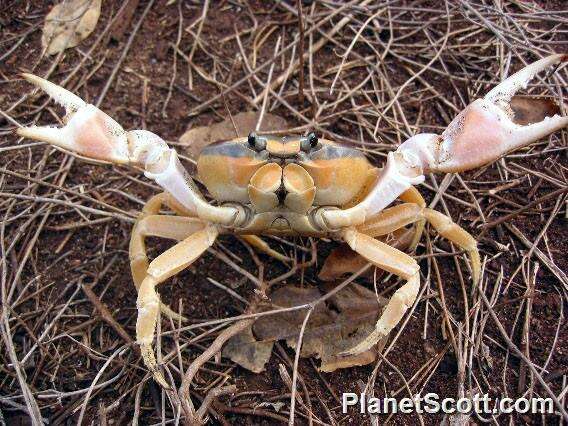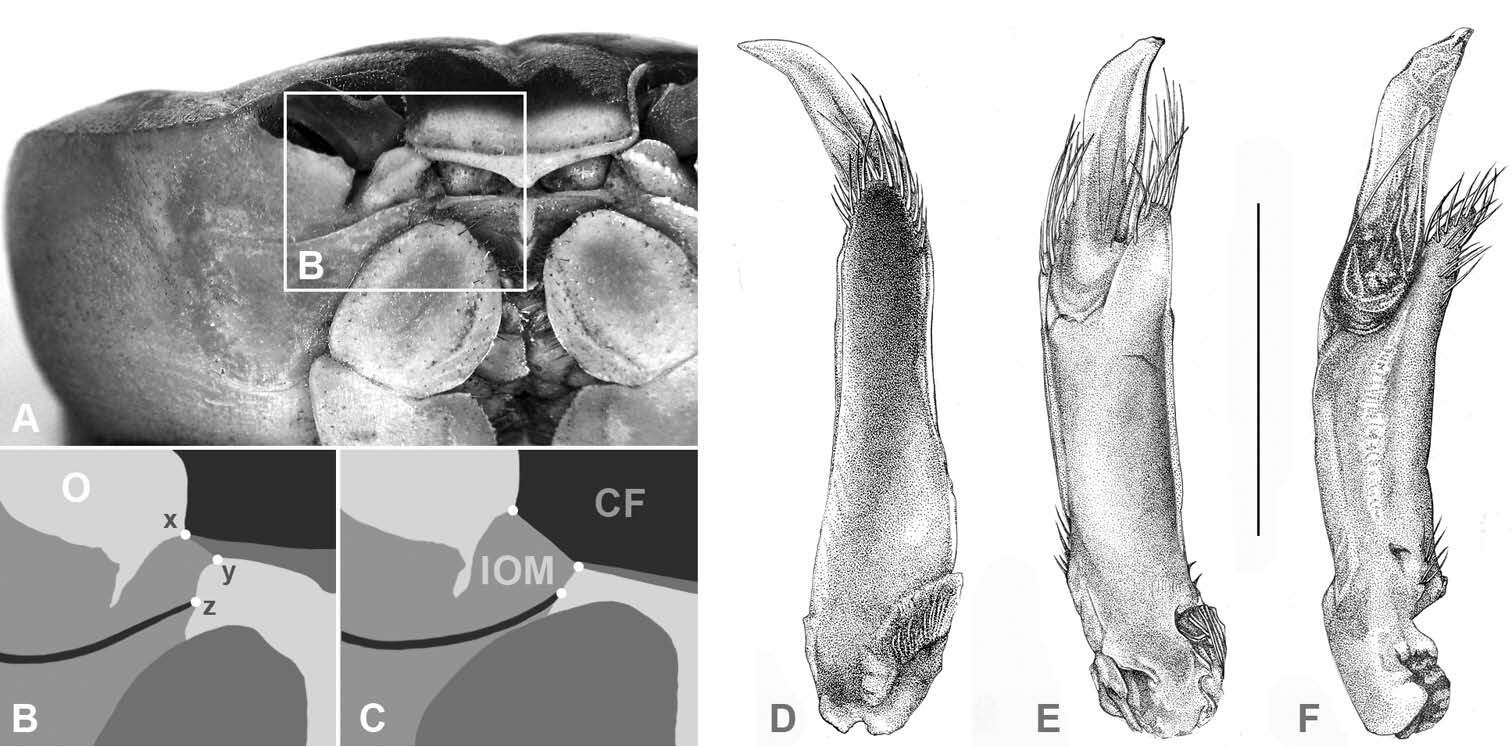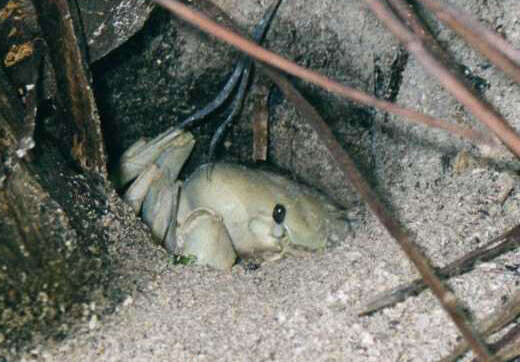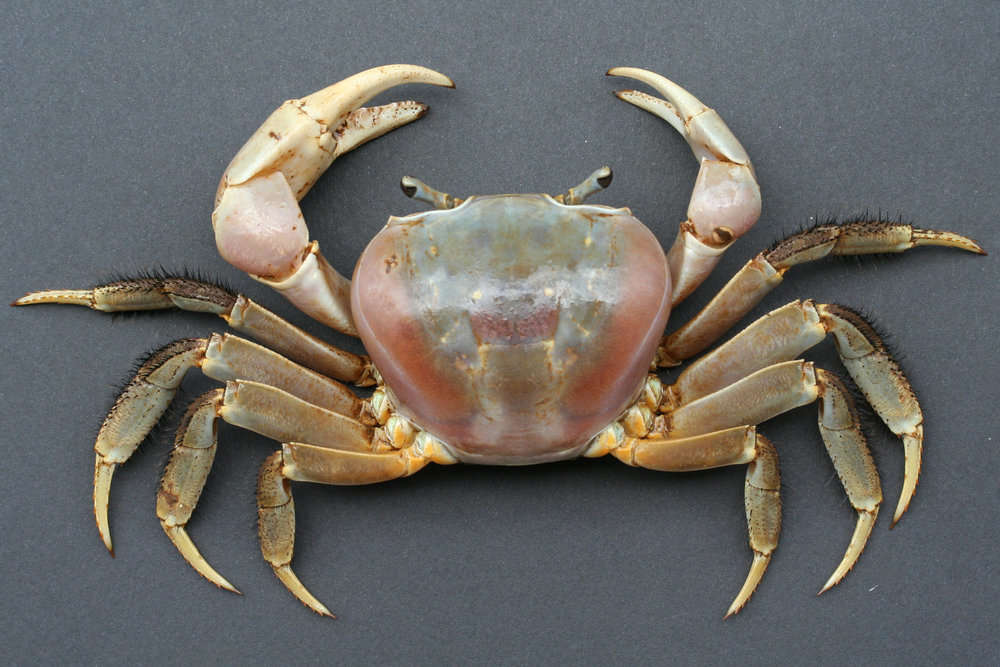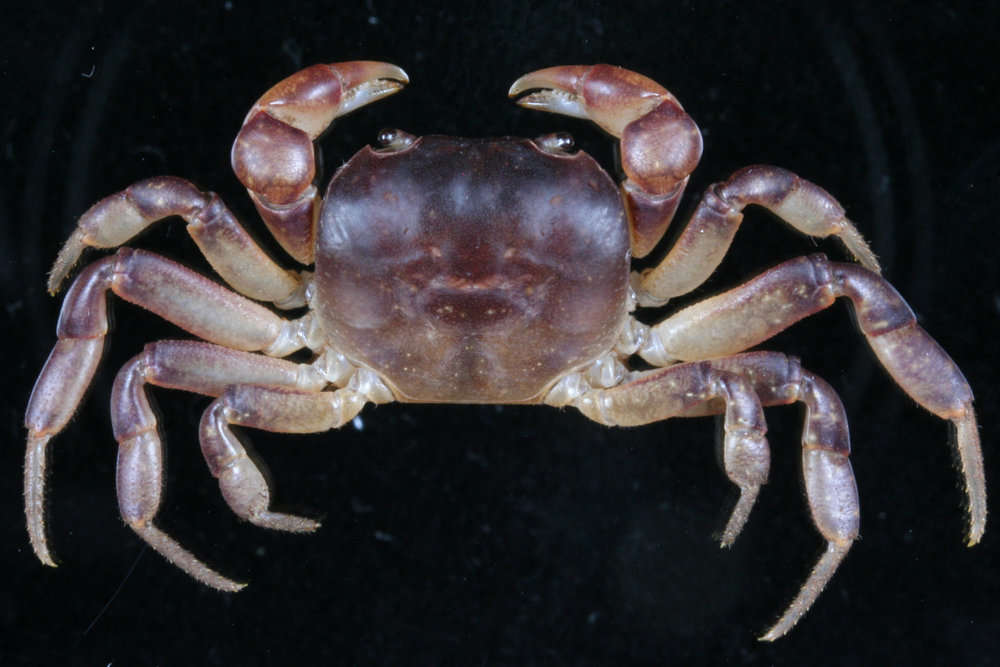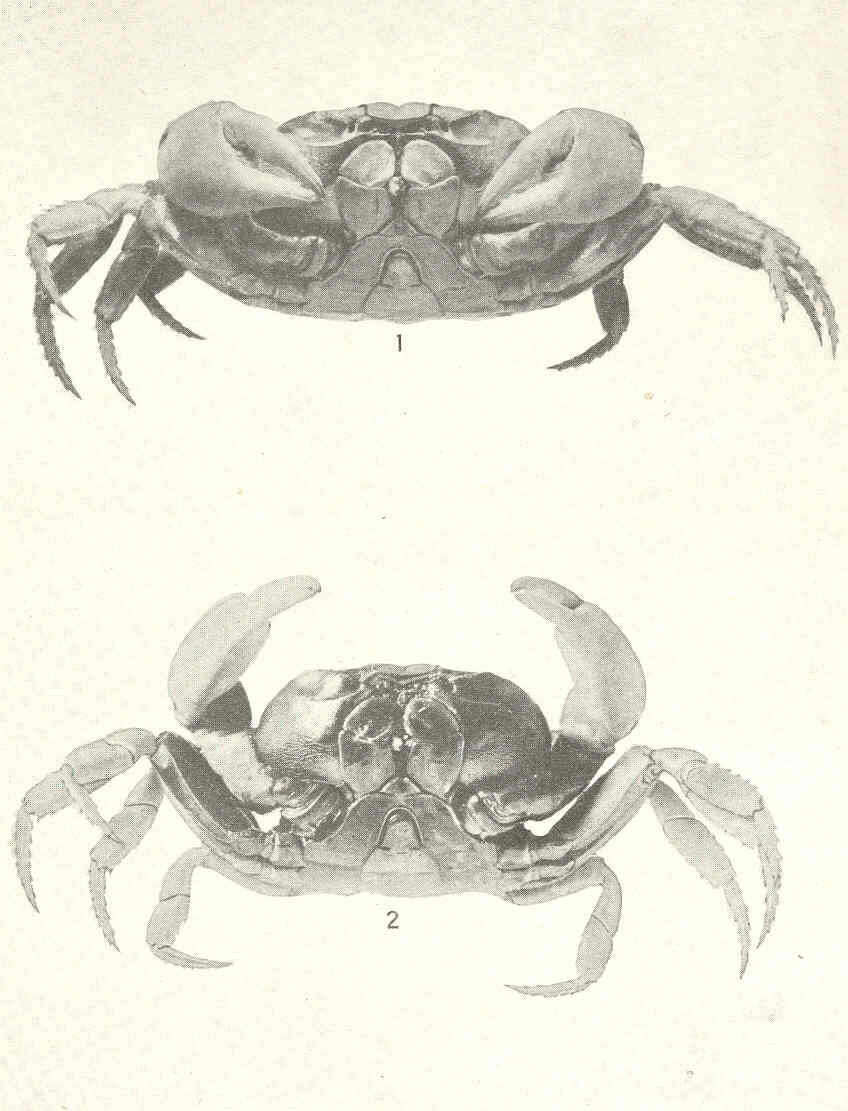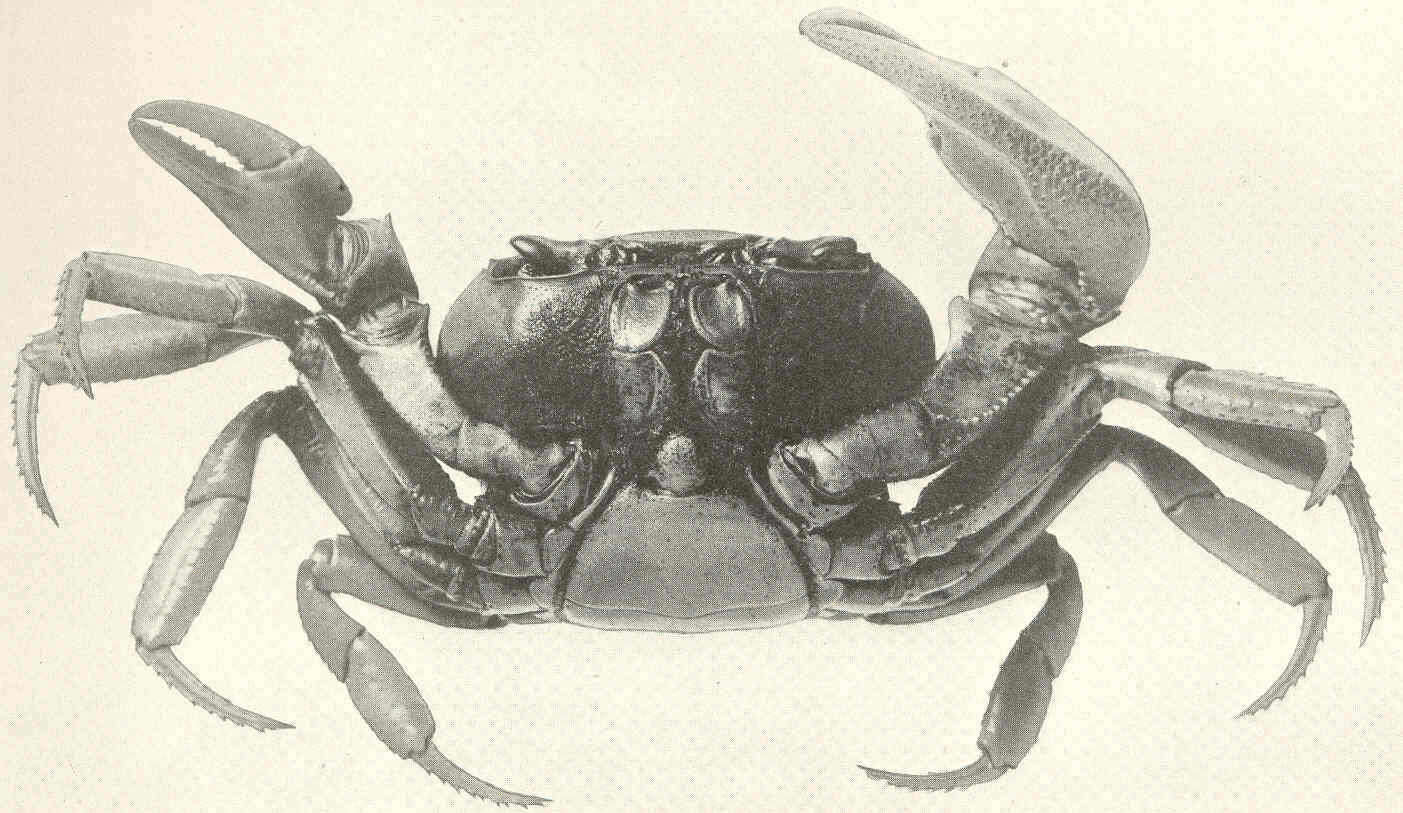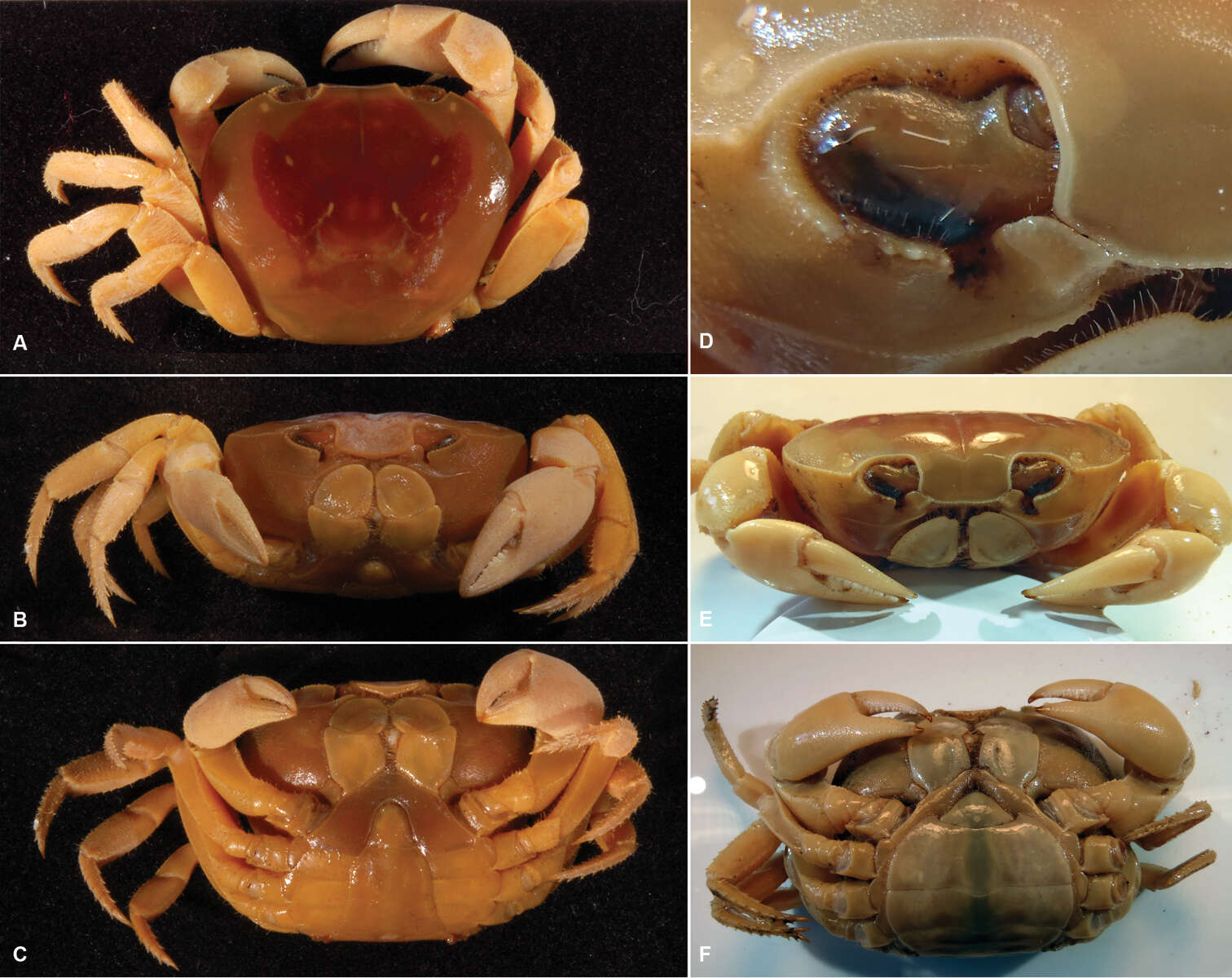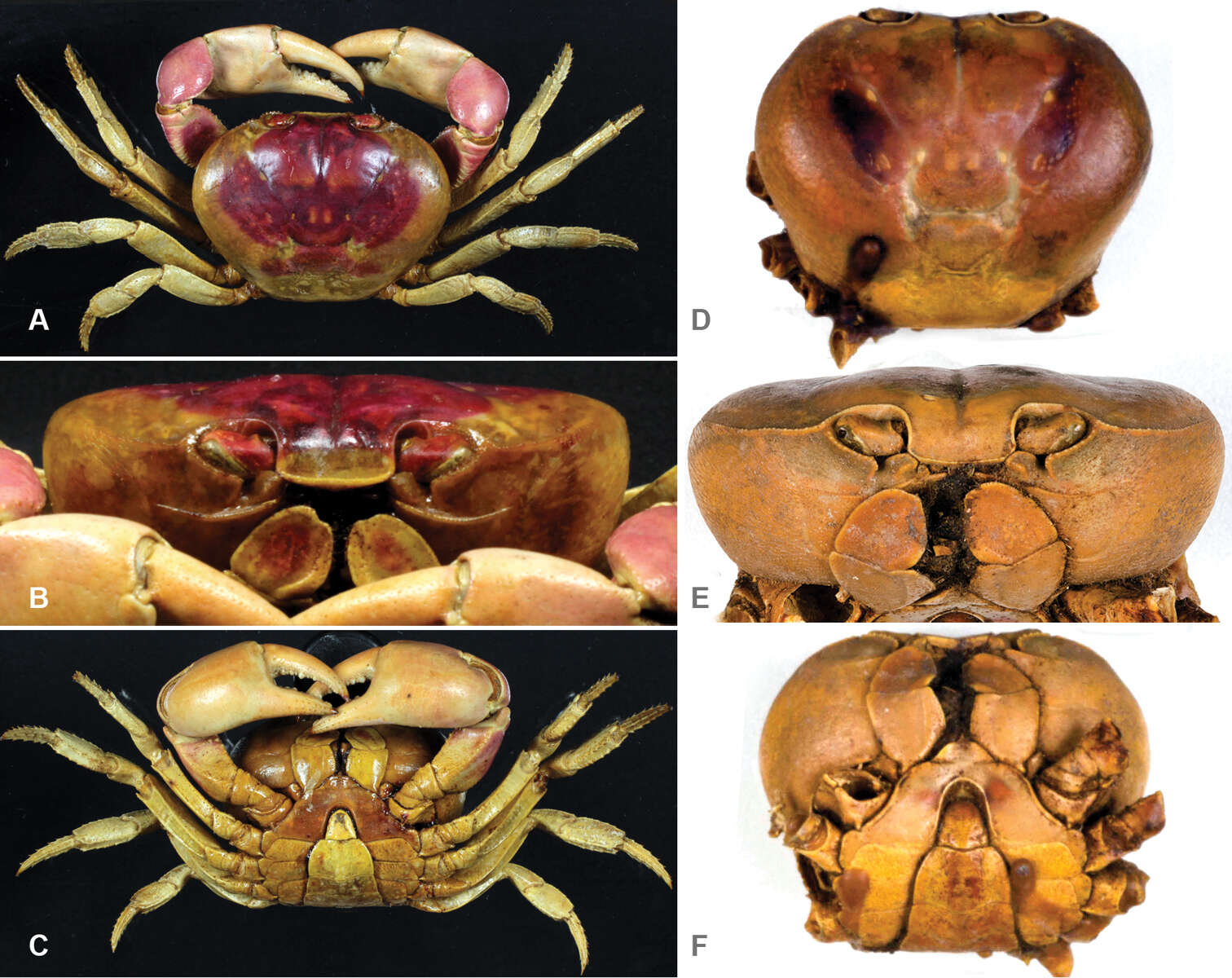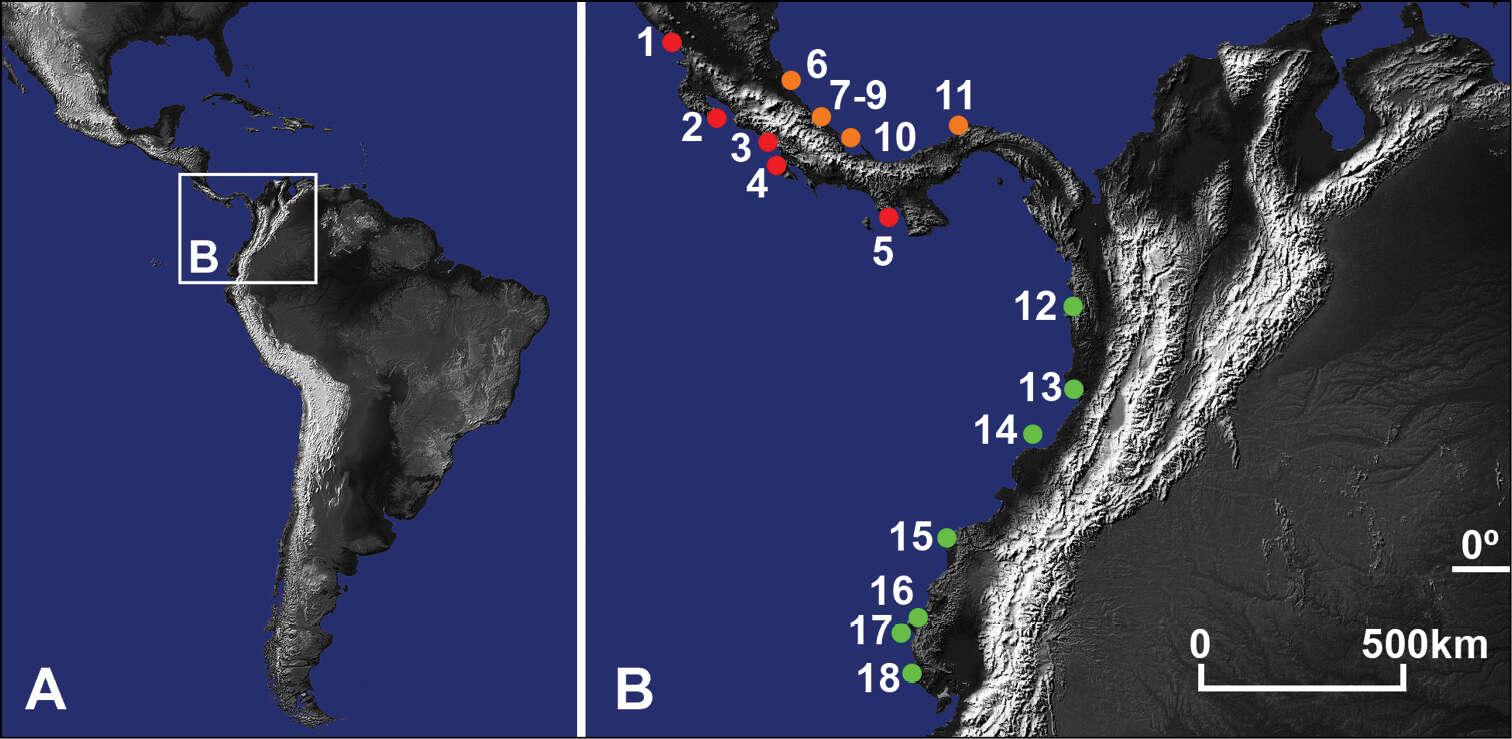-
All Biocode files are based on field identifications to the best of the researcher’s ability at the time.
-
All Biocode files are based on field identifications to the best of the researcher’s ability at the time.
-
Gecarcinus quadratus.
-
Gecarcinus lateralis.
-
Cardisoma guanhumi.
-
Cardisoma crassum.
-
Playa Punta Raza
-
Figure 2.(CF) Carapace front; (O) orbit; (IOM) mesial lobe of infraorbital margin; (x) widest width of CF; (z) mesial end of suborbital crista; (x–y) width of IOM at point of contact with CF; (y–z) shortest distance between CF and mesial end of suborbital crista; A, B Atlantic Gecarcinus lateralis (Freminville 1835), male, carapace width (CW) 31 mm, Costa Rica, Puerto Viejo C Gecarcinus nobilii sp. n., holotype, male, CW 31 mm, Ecuador, Punta Galera (LACM CR 1968-477). First male gonopod: Gecarcinus nobilii sp. n., holotype: D mesial view E lateral view F Pacific Gecarcinus lateralis (sensu Türkay 1973), CW 31 mm, Costa Rica, Hermosa Beach, lateral view; Scale bar = 5 mm.
-
Subject: Live Animal | Type: Photo | Life Stages And Gender: Adult/Sexually Mature
-
All Biocode files are based on field identifications to the best of the researcher’s ability at the time.
-
All Biocode files are based on field identifications to the best of the researcher’s ability at the time.
-
Gecarcinus quadratus.
-
Gecarcinus lateralis.
-
Cardisoma guanhumi.
-
Cardisoma crassum.
-
Figure 3.Gecarcinus nobilii sp. n., holotype, male, carapace width 31 mm, Ecuador, Punta Galera (LACM CR 1968-477), preserved in alcohol (color faded): A dorsal view B frontal view C ventral view. Paratype, female, Ecuador, St. Elena (MNHN, B12314), preserved in alcohol (color faded): D carapace front E frontal view F ventral view.
-
Figure 4.Gecarcinus nobilii sp. n., color in life; Colombia: Gorgona Island A male, photo by Karla Garcia Burneo (Peru) B, C male, photos by Rhett A. Butler (USA) D female, Buenaventura dept., Chucheros Beach, photo by Elena Gómez E sex unknown, Chocó dept., Nuquí prov., Canangucho Forest Reserve. Ecuador: F sex unknown, Manabí prov., Ayampe, photo by David Liebman (USA). Captive individuals from the pet trade, origin unknown: G sex unknown, photo by Oliver Mengedoht (Germany) H, I females, photos by John Beatty (USA) (the individual shown above in Fig. 1 belongs to the Pacific population of Gecarcinus lateralis (sensu Türkay 1973), please note the differences in the mesial lobe of the infraorbital margin).
-
Figure 5.Dorsal carapace pattern (shape of light patches could vary slightly): Gecarcinus lateralis (Freminville 1835) (sensu Türkay 1973): A Pacific coast of Central America. Atlantic coast of Central America: B form with lateral margin (M) on dorsal carapace and orange patches at anterolateral (AP) and posterior (PP) carapace border; C form without lateral margin on dorsal carapace D Gecarcinus nobilii sp. n.
-
Figure 6.A–C lectotype of Gecarcinus lateralis (Freminville, 1835), male, carapace width 47.2 mm, Guadeloupe (MNHN-3758) (dried specimen, color faded) D–F syntype of Gecarcinus quadratus Saussure, 1853, male, carapace width 39.7 mm, Mexico, Mazatlan (ANSP-CA3741) (dried specimen, color faded) (photos by Paul Callomon, Academy of Natural Sciences of Drexel University, Philadelphia).
-
Figure 1.A Central and South America B Study area with locations of examined Pacific (red) and Atlantic (orange) Gecarcinus lateralis (Freminville, 1835) (sensu Türkay 1973) and Gecarcinus nobilii sp. n. (green). Nicaragua, Pacific coast: (1) Rivas, San Juan del Sur. Costa Rica, Pacific coast, Puntarenas dept.: (2) Pochote Beach; (3) Hermosa Beach; (4) Drake Bay. Panama, Pacific coast: (5) Veraguas, Santa Catalina. Costa Rica, Atlantic coast, Limón dept.: (6) Parismina; (7) Puerto Viejo; (8) Manzanillo; (9) Punta Mona. Panama, Atlantic coast: (10) Bocas del Toro, Bluff Beach; (11) Colón, Maria Chiquita. Gecarcinus nobilii sp. n.: Colombia, Pacific coast: (12) Choco, Nuquí; (13) Buenaventura, Chucheros Beach; (14) Gorgona Island. Ecuador: (15) Esmeraldas, Punta Galera (type location); (16) Manabí, Ayampe; (17) Plata Island; (18) Santa Elena.
-
Figure 2.(CF) Carapace front; (O) orbit; (IOM) mesial lobe of infraorbital margin; (x) widest width of CF; (z) mesial end of suborbital crista; (x–y) width of IOM at point of contact with CF; (y–z) shortest distance between CF and mesial end of suborbital crista; A, B Atlantic Gecarcinus lateralis (Freminville 1835), male, carapace width (CW) 31 mm, Costa Rica, Puerto Viejo C Gecarcinus nobilii sp. n., holotype, male, CW 31 mm, Ecuador, Punta Galera (LACM CR 1968-477). First male gonopod: Gecarcinus nobilii sp. n., holotype: D mesial view E lateral view F Pacific Gecarcinus lateralis (sensu Türkay 1973), CW 31 mm, Costa Rica, Hermosa Beach, lateral view; Scale bar = 5 mm.
-
Figure 3.Gecarcinus nobilii sp. n., holotype, male, carapace width 31 mm, Ecuador, Punta Galera (LACM CR 1968-477), preserved in alcohol (color faded): A dorsal view B frontal view C ventral view. Paratype, female, Ecuador, St. Elena (MNHN, B12314), preserved in alcohol (color faded): D carapace front E frontal view F ventral view.
-
Figure 4.Gecarcinus nobilii sp. n., color in life; Colombia: Gorgona Island A male, photo by Karla Garcia Burneo (Peru) B, C male, photos by Rhett A. Butler (USA) D female, Buenaventura dept., Chucheros Beach, photo by Elena Gómez E sex unknown, Chocó dept., Nuquí prov., Canangucho Forest Reserve. Ecuador: F sex unknown, Manabí prov., Ayampe, photo by David Liebman (USA). Captive individuals from the pet trade, origin unknown: G sex unknown, photo by Oliver Mengedoht (Germany) H, I females, photos by John Beatty (USA) (the individual shown above in Fig. 1 belongs to the Pacific population of Gecarcinus lateralis (sensu Türkay 1973), please note the differences in the mesial lobe of the infraorbital margin).
-
Figure 5.Dorsal carapace pattern (shape of light patches could vary slightly): Gecarcinus lateralis (Freminville 1835) (sensu Türkay 1973): A Pacific coast of Central America. Atlantic coast of Central America: B form with lateral margin (M) on dorsal carapace and orange patches at anterolateral (AP) and posterior (PP) carapace border; C form without lateral margin on dorsal carapace D Gecarcinus nobilii sp. n.

